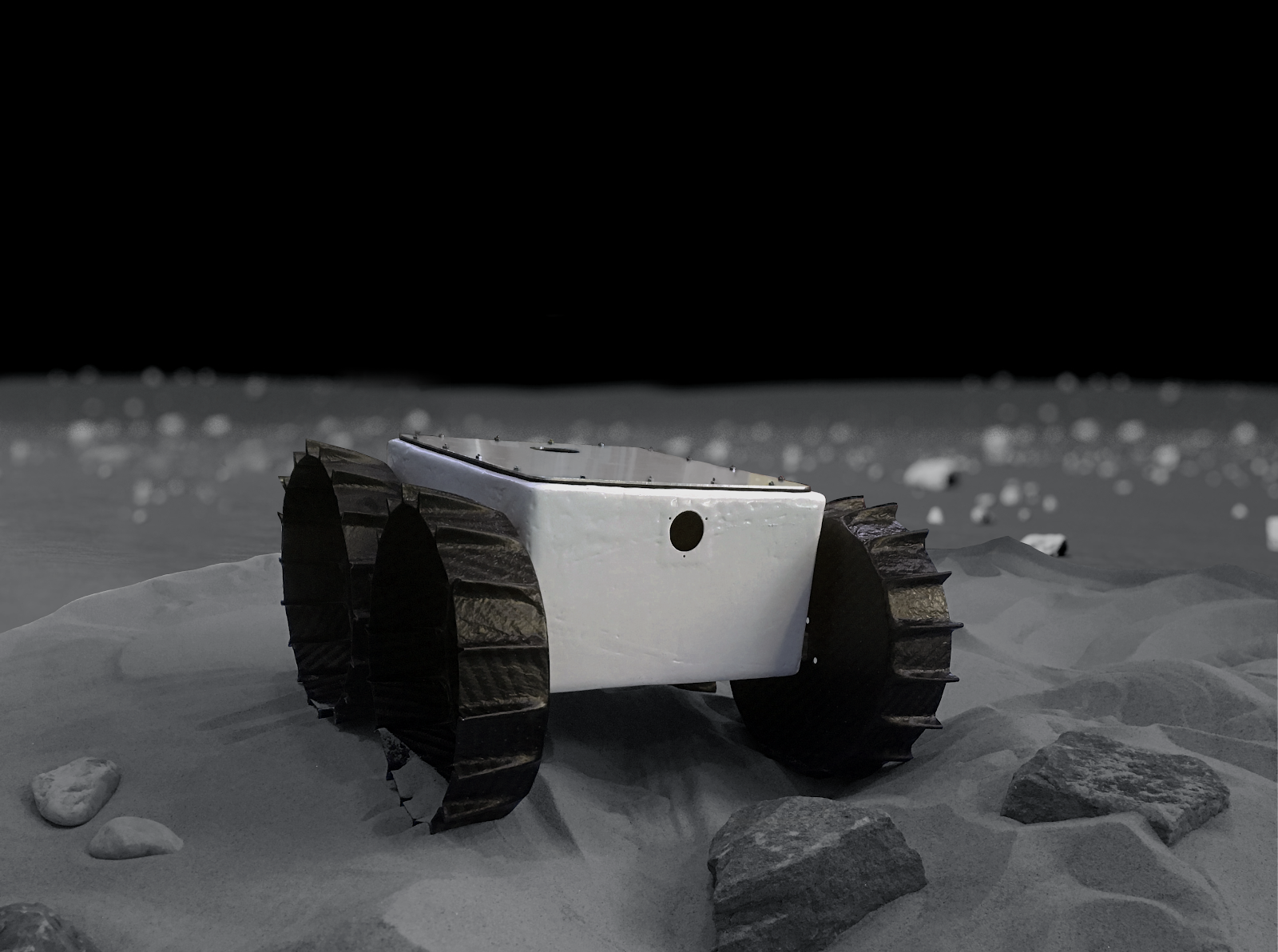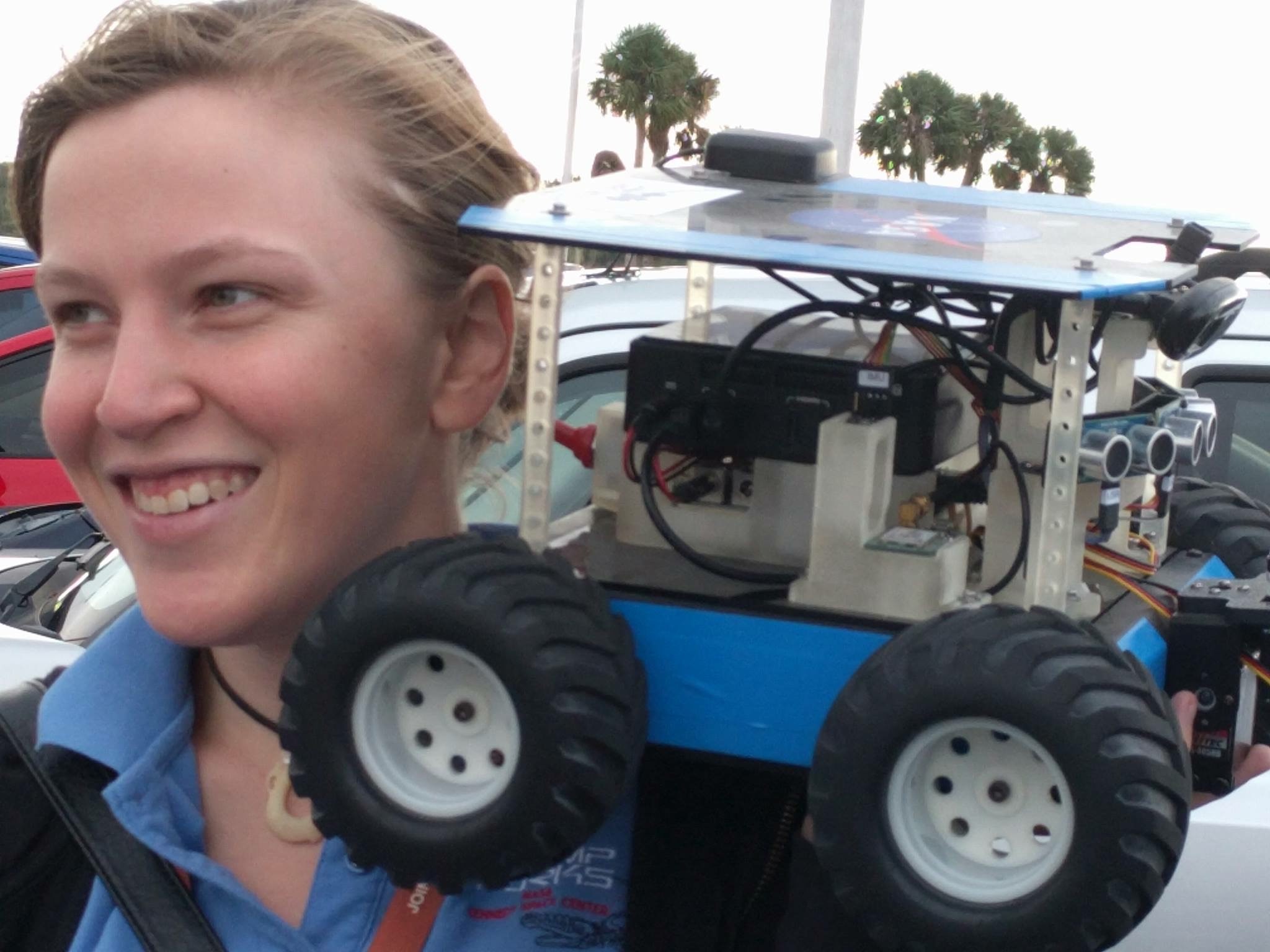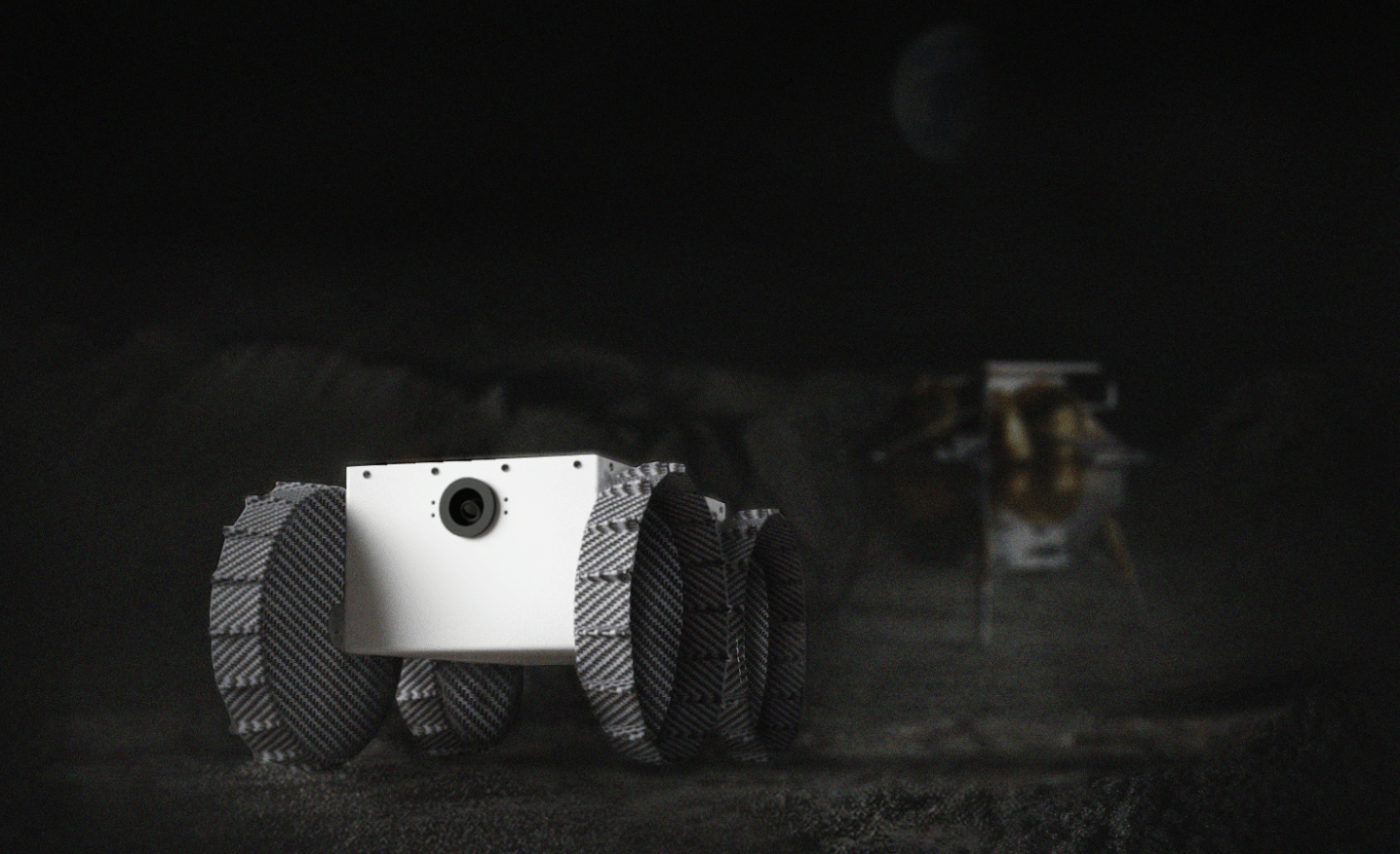By Linda Herridge
NASA’s John F. Kennedy Space Center
When she was an intern at NASA’s Kennedy Space Center in Florida, Raewyn Duvall didn’t know her experience would quickly guide her to a leading role in creating a small robotic explorer destined for the Moon.
Duvall’s first internship involved working on ground software in Kennedy’s Engineering Directorate in 2015. She returned as a Pathways intern in Swamp Works from May 2016 to August 2019, where she helped develop embedded systems, controls, and automation for in-situ resource utilization for robots designed for space exploration.
Now, Duvall is a student at Carnegie Mellon University (CMU) in Pittsburgh pursuing a doctorate in electrical and computer engineering. She also is the deputy program manager for Iris, a four-wheeled rover about the size of a shoebox that weighs less than 5 pounds, in development at the university in close collaboration with Astrobotic Technology and NASA. Iris is a CubeRover, which like CubeSats use small standardized designs to make exploration cheaper and faster.
NASA has helped advance the miniature rover concept since 2017. Astrobotic, a Pittsburgh-based company founded by CMU alumni, began working with NASA on CubeRover through the agency’s Small Business Innovation Research program. Under the initial partnership, the company and a team at Kennedy developed the basis for a small rover.
In September 2019, NASA’s Space Technology Mission Directorate awarded Astrobotic a $2 million Tipping Point award to ready CubeRover for the Moon. The company, CMU and several NASA centers are currently maturing payload interfaces and increasing rover capabilities.
As the first CubeRover to secure a flight to the Moon, Iris is an example of how NASA investments stimulate technology innovation.
“This is a huge step toward putting more rovers on the Moon,” Duvall said. “We will be gathering data to understand trafficability of the lunar regolith and testing new teleoperation command techniques.”
The rover’s main objectives include successfully driving the rover on the Moon, capturing and transmitting an image back to Earth, and venturing approximately 160 feet (the length of a football field) to document the plume effect caused by the lander’s exhaust system. Another objective is to provide power, mobility, and communications to support science and technical demonstration payloads.
Duvall said her NASA work experience has helped her lead this project. Kurt Leucht, a software engineer in Kennedy’s Swamp Works, served as Duvall’s mentor on several projects, including lunar environments testbed systems and robotic excavator software design. Duvall wrote software for a demonstration robot to showcase how an automated ground system of robots can perform maintenance and inspections procedures in hazardous locations.
“Raewyn was an integral part of several different projects at Kennedy,” Leucht said. “And all of those projects get us closer to living and working on the Moon for long-duration missions.”
Space and science fiction became part of Duvall’s life at an early age. “I have always found space fascinating,” Duvall said. “Growing up surrounded by and reading science fiction novels, I got into engineering specifically to make that fiction reality.”
Iris is set to fly on Astrobotic’s Peregrine lander carrying NASA payloads to the Moon in 2021. In May 2019, NASA selected Astrobotic and Intuitive Machines as the first commercial companies to fly payloads to the lunar surface as part of the Commercial Lunar Payload Services (CLPS) project. While NASA awarded the companies to fly the agency’s science investigations and technology demonstrations to the lunar surface, the agency expects to be one of many customers that will use these commercial landing services. In fact, Iris is one of several additional payloads that customers are sending with 11 NASA payloads which will be integrated onto Astrobotic’s Peregrine lander and launch on a United Launch Alliance Vulcan Centaur rocket to the Moon in 2021.
“For such a tiny rover, Iris has a big mission to lead America back to the Moon, and I’m so proud to lead this team of passionate students who are paving the way for future planetary robotic exploration,” Duvall said. “We’re all excited for Iris’s launch, to drive a rover on the lunar surface, and to see what we can discover!”
Through CLPS, NASA is working with American companies for commercial deliveries of science experiments and technology demonstrations to the lunar surface. Validating capabilities with CLPS missions supports exploration of the Moon and is a way the agency is preparing to put the first woman and next man on the Moon. Flying Iris and potentially other commercial payloads to the lunar surface on CLPS flights is an example of NASA’s work to spur commercial interest in the Moon and build a space economy beyond low-Earth orbit.
NASA’s investments in investigations and demonstrations like Iris will help the agency study Earth’s nearest neighbor under the Artemis program. CLPS is leading America’s return to the lunar surface and is an important predecessor to the return of humans to the lunar surface in 2024. Under Artemis, NASA is working with commercial and international partners as well as involving the brightest minds of academia, business, and communities of all types to establish sustainable lunar exploration by the end of the decade, and getting ready for human exploration of the Moon.
Learn more about NASA’s Moon to Mars plans at www.nasa.gov/moontomars.





























